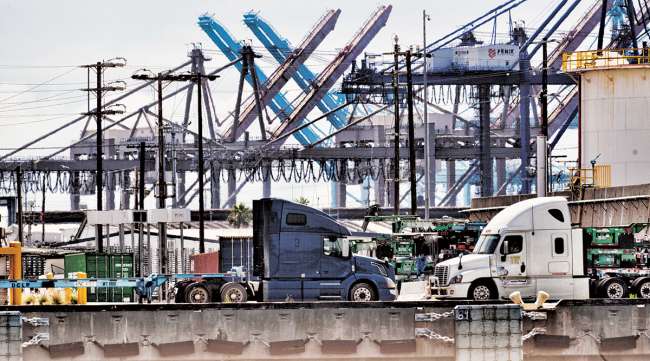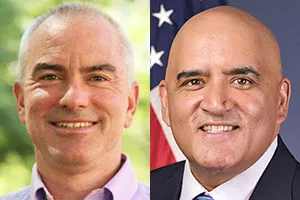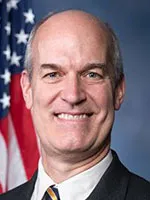Senior Reporter
DOT Grant Program Focuses on Commercial Ports

[Stay on top of transportation news: Get TTNews in your inbox.]
The U.S. Department of Transportation announced grants for ports and supply chain corridors as part of the White House’s strategy for advancing a zero-emission freight landscape.
DOT on April 24 indicated that 16 port-centric projects would receive nearly $150 million from its Reduction of Truck Emissions at Port Facilities program. The funds, administered by the Federal Highway Administration, are aimed at improving air quality and modernizing areas near or adjacent to commercial ports.
“When truckers spend hours idling at ports, it’s bad for drivers, bad for supply chains and bad for nearby communities that feel the brunt of more polluted air,” Transportation Secretary Pete Buttigieg said. “The investments we are announcing today will save truck drivers time and money and help ports reduce congestion and emissions while making the air more breathable for workers and communities.”
The department’s recent action is central to President Joe Biden’s comprehensive initiative meant to mitigate sources of domestic greenhouse gas emissions. According to background information the White House provided April 24: “This whole-of-government strategy includes new federal investments announced today, continued engagement with stakeholders on zero-emissions freight infrastructure and forthcoming action plans on each of the freight segments.”
When truckers spend hours idling at ports, it’s bad for drivers, bad for supply chains and bad for nearby communities that feel the brunt of more polluted air.
Pete Buttigieg, secretary of transportation
Image
Specifically, the government’s aim is to support the White House’s goals for a carbon pollution-free energy sector by 2035 and for arriving at net-zero emissions from the transportation sector by 2050. “The strategy will prioritize actions to address air pollution hot spots and tackle the climate crisis, mobilizing a broad range of government resources, and reflect public participation and meaningful community engagement, furthering the president’s commitment to environmental justice for all,” the White House explained.
At an event coinciding with the announcement, Drew Kodjak, senior director for transportation emissions at the White House climate policy office, observed: “This is the start of an ongoing process that we intend to continue both in the data collection side and also in the community of practice.” Shailen Bhatt, administrator at the Federal Highway Administration, moderated a plenary session at the event: “If we look around, we’re at the White House with a whole-of-government approach — some of the brightest minds in the private sector, academia coming together. And I am just completely confident that we are going to solve this problem.”

Drew Kodjak and Shailen Bhatt
In addition to DOT, the Environmental Protection Agency announced nearly $1 billion in funding availability to assist cities, states and tribal agencies transition to a zero-emission outlook. “The funding will support infrastructure to charge, fuel and maintain heavy-duty, zero-emission vehicles along with workforce development and training to get this work done,” per the White House. The Department of Energy also announced $72 million to establish a “SuperTruck: Charged” program designed to facilitate affordable and reliable charging infrastructure.
Senior congressional Democrats touted the White House’s announcement. “By reducing truck emissions, today’s funding will reduce pollution at ports and improve air quality for communities near ports and port workers,” said Rep. Rick Larsen (D-Wash.), Transportation and Infrastructure Committee ranking member. “In my state of Washington, the Seattle-Tacoma region will use some of the funding to incentivize deployment of up to 58 zero-emission trucks that will be used to transport freight in the region.”

Larsen
Last month, the administration’s Joint Office of Energy and Transportation unveiled a road map to incrementally reduce emissions through 2040. This “National Zero-Emission Freight Corridor Strategy” is viewed as a tool to inform budgets for agencies and enable public-private partnerships. Administration officials said they would rely on the strategy to accelerate adoption of zero-emission Class 8 trucks.
“A core objective of the strategy is to meet freight truck and technology markets where they are today, determine where they are likely to develop next, and set an ambitious pathway that mobilizes actions to achieve decarbonization,” according to the plan from the Joint Office of Energy and Transportation unveiled March 12.
Stakeholders have acknowledged the administration’s attention to electrification and vehicle charging infrastructure. In a statement last month, American Trucking Associations Vice President of Energy and Environmental Affairs Jacqueline Gelb noted, “Providing convenient and low-cost charging and hydrogen refueling infrastructure will be a key proof point for fleets to begin to adopt and operate zero-emission trucks. Establishing guidelines and parameters for a national freight network will prioritize federal activities and investment to deliver the necessary supporting infrastructure to ensure our nation’s supply chain can continue to deliver.”
Want more news? Listen to today's daily briefing below or go here for more info:


